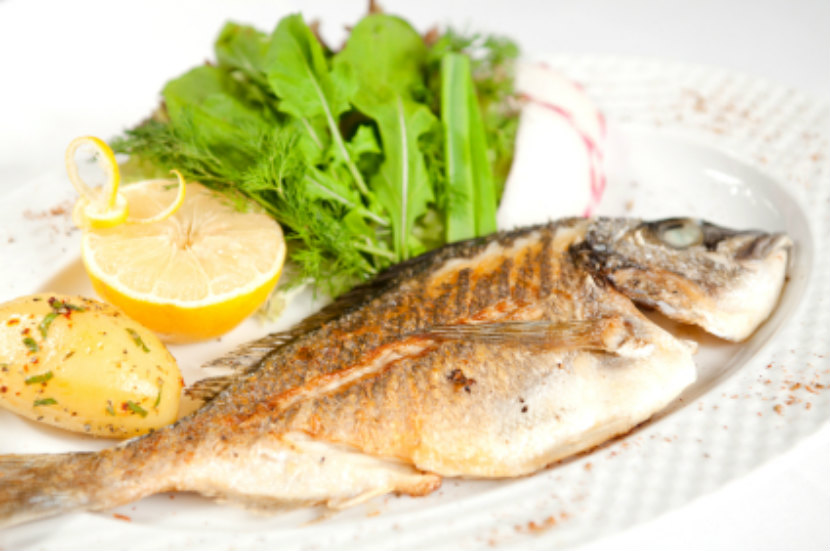
Many of the staple foods in Caribbean and African diets are good for your health. From leafy green vegetables to fresh mango to beans, there are lots of nutrient-rich choices. However, fried foods and sweets are also popular and should be limited. If you have diabetes, you can work with your healthcare team to develop a plan that’s right for you. It will probably include exercise, a meal plan, blood glucose monitoring, and perhaps medication. This article will focus on the dietary changes that you can make.
What is type 2 diabetes?
Diabetes is a disease where the pancreas does not make enough insulin or the body does not use insulin properly. Insulin is a hormone made by the pancreas.
When the body is working well, insulin helps carry sugar (glucose) from your blood to your cells where it is used for energy. If you have diabetes, your body's cells do not receive enough glucose, so it stays in your blood. High blood glucose (or high blood sugar) can lead to heart, kidney, vision and blood vessel problems.
Who has a higher risk of diabetes?
Some ethnic groups in Canada have a higher risk of getting diabetes, including people of African descent. There are certain genes that affect insulin function. Having these genes increases your risk of diabetes. These genes are commonly found in high risk populations such as people with an African heritage.
What to eat…and when
If you have diabetes, it is important to eat every 4 to 6 hours to keep your blood sugar levels stable. Try to have three daily meals at regular times and have healthy snacks when you are hungry. A balanced meal has foods from at least 3 of the 4 food groups:
-
Vegetables and Fruit
-
Grain Products
-
Milk and Alternatives
-
Meat and Alternatives
You can work with a Registered Dietitian to make a personal meal plan. An example of a healthy meal plan may look like this:
Breakfast:
-
¾ of a cup of cooked hominy, oatmeal or porridge
-
¼ cup of unsalted peanuts or almonds
-
1 banana
Lunch:
-
½ a cup of curried pigeon peas
-
½ a cup of yams
-
1 cup of salad with 1 Tbsp of oil-based salad dressing
-
1 guava
Snack:
-
¾ of a cup of yogurt
-
½ a cup of mango or soursop
Dinner:
-
2 ½ oz of roasted chicken
-
1 cup of collards
-
½ a cup of green banana or cassava
-
1 small whole grain roll, chapatti or other bread
-
1 tsp of soft margarine
Snack:
-
1 oz of low-fat cheese
-
4 whole grain crackers
-
Water with lemon or lime
Choose healthy fats
In addition to the four food groups, it is also important to include healthy fats in your diet. People with diabetes are at higher risk for heart disease so choosing better fats is important. Healthy fats are found in:
-
oils (olive, canola, sunflower)
-
nuts
-
seeds
-
avocado
-
oily fish such as salmon.
Try to limit saturated fats such as butter, lard, shortening, palm oil and coconut oil. You can also lower saturated fat by choosing lean meat, fresh fish, skinless poultry and low-fat milk products. Choose lower fat cooking methods such as baking, broiling, barbequing or roasting. Cook with less oil.
Limit these high fat meats:
-
Chicken wings
-
Sausage
-
Spareribs
-
Chicken, cow or pig feet
-
Cow tongue
-
Pig or ox tail
Cut back on fried snack foods such as plantain chips, mandazi, vetkoek, puff puff and dumplings. Pastries, tarts and baked goods should also be limited.
Choosing carbohydrates
Carbohydrate is a word for foods that have starch, sugar and fibre. The type and amount of carbohydrate you eat and when you eat it is important. Having too much carbohydrate in a meal can cause your blood sugar to go too high. Your personal meal plan will have the right levels of carbohydrate for you.
If you have diabetes, choose more high-fibre foods. A type of fibre called soluble fibre may help control blood sugar levels. Try these high-fibre foods:
Vegetables: okra, eggplant, carrots, broccoli, leafy greens such as callaloo, kale, collards, spinach and Swiss chard
Fruits: guava, sapodilla, pomegranate, oranges, mango, banana, papaya, pineapple, apples, melon and berries
Whole grains: oats, millet, teff, barley, brown rice, maize and whole wheat.
Legumes: kidney beans, lentils, pigeon peas, chickpeas and cowpeas
Nuts and seeds: almonds, walnuts, peanuts, flax seeds and cashews
Limit sugary foods such as fruit juice and nectars, jam, candy, baked goods and pop. Talk to your dietitian about the type and amount of sweet foods that fit into your meal plan.
Bottom line
By making small changes to traditional recipes, you can still enjoy your favourite foods. To help manage your blood sugar levels, follow Canada’s Food Guide and your personal meal plan. Choose more high fibre foods and the right types of fat.
Last Update – October 13, 2020